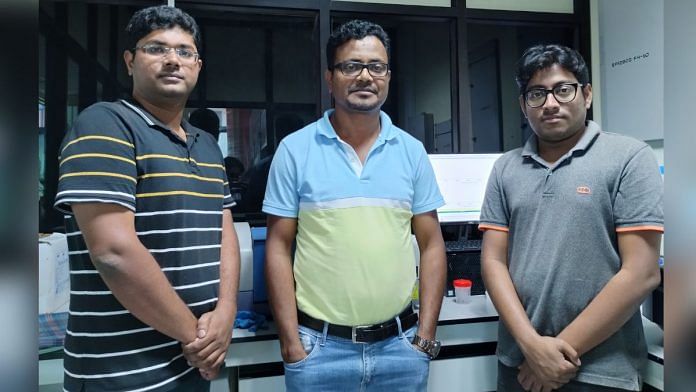New Delhi: Have you imagined a future where you could charge your phone through photosynthesis?
Well, that future is not too far away, thanks to scientists at the Indian Institute of Science Education and Research (IISER), Thiruvananthapuram and Indian Institute of Technology (IIT), Indore, who have successfully developed a method to artificially mimic photosynthesis.
In an exciting first that can potentially change the way we collect solar energy, these researchers have developed a new system to artificially capture light and convert it into power, thus recreating photosynthesis, the process through which plants absorb sunlight and produce sugar.
Scientists across the globe have attempted to create more efficient solar cells by replicating the molecular and atomic structure of chromophores — light absorbing molecules that plants use in photosynthesis — in their engineered systems in labs.
Chromophores absorb visible light and pass it on to other components that use the energy for various chemical reactions. The exposed chromophores on leaves absorb solar energy and pass it on to adjoining chromophores until the energy reaches its destination.
However, these attempts using polymeric structures, detergent-type molecules and other similar structures have faced a common problem, with the bunching up or aggregation of molecules leading to poor capturing of light and conversion efficiencies.
The aggregation of molecules reduces their activity and their ability to harvest light as it reduces the active sites on these molecules. Hence, this aggregation leads to less efficient absorption of light.
“It is essential to understand the structure of these nanoclusters to find ways to improve their efficiency. Earlier, the silver nanoclusters were showing very weak emission properties at room temperature. By strategically synthesising them, we were able to enhance its emission properties, improving the way it captures, absorbs and transfers light between molecules,” said Dr Sukhendu Mandal, Associate Professor, Department of Chemistry, IISER, TVM to ThePrint.
Through the results of this study, the researchers have found a method to create a highly efficient photosynthetic system using silver nanoclusters, a hundred thousand times smaller than the width of human hair.
To protect these nanoclusters from reacting with each other as well as other substances and to stabilise them, the scientists used organic adamantanethiol ligands which react with and surround the inorganic silver molecules, thus protecting it from the environment.
Ligands are ions or neutral molecules that bond to a central metal atom or ion.
This ligand-protected molecule is then entrapped inside another large molecule called cyclodextrin, which further protects the silver nanoclusters, increasing its longevity and enhancing its emission properties.
Using this method, the scientists achieved a 93% energy transfer efficiency, showing that this harvested energy could generate current with much-enhanced yields compared to the individual components.
“We used silver clusters as they are much cheaper than other metallic clusters like gold and platinum. However, using silver also posed some challenges as the material is prone to oxidising and is light sensitive,” said Dr Mandal of IISER, TVM.
The lead researcher of the project further added, “To overcome these challenges with silver, we used organic ligands to protect the silver clusters from oxidation and worked on it at night to avoid any reaction with light. Entrapping the clusters in the cyclodextrin molecule helped protect the cluster as well as increase its longevity and improve its emission properties.”
The scientists hope that such research into highly-efficient energy transfer systems will provide the foundation for designing new light-harvesting materials that can enhance the efficiency of solar cells and reduce energy loss.
“We are also working with copper clusters in this project as it is the cheapest material and we aim to make this technology as cost effective as possible. However, since copper oxidizes faster, it poses a greater challenge than silver,” Dr Mandal said.
The paper has been co-authored by IISER, TVM’s Dr Sukhendu Mandal, Dr Sourav Biswas and Anish Kumar Das, and IIT Indore’s Professor Biswarup Pathak and Surya Sekhar Manna.
These researches are expected to help achieve India’s net-zero carbon emissions by 2070 and to meet 50% of its electricity needs from renewable sources such as solar power by 2030.
Also read: India’s 1st private launchpad for Chennai startup Agnikul Cosmos inaugurated at Sriharikota



